Nissan Maxima Service and Repair Manual: Basic inspection
DIAGNOSIS AND REPAIR WORKFLOW
Trouble Diagnosis Flow Chart
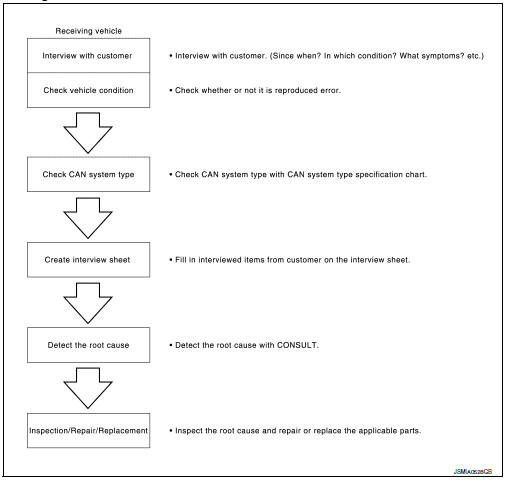
Trouble Diagnosis Procedure
INTERVIEW WITH CUSTOMER Interview with the customer is important to detect the root cause of CAN communication system errors and to understand vehicle condition and symptoms for proper trouble diagnosis.
Points in interview
- What: Parts name, system name
- When: Date, Frequency
- Where: Road condition, Place
- In what condition: Driving condition/environment
- Result: Symptom
NOTE:
- Check normal units as well as error symptoms.
- Example: Circuit between ECM and the combination meter is judged normal if the customer indicates tachometer functions normally.
- When a CAN communication system error is present, multiple control units may malfunction or go into failsafe mode.
Indication of the combination meter is important to detect the root cause because it is the most obvious to the customer, and it performs CAN communication with many units.
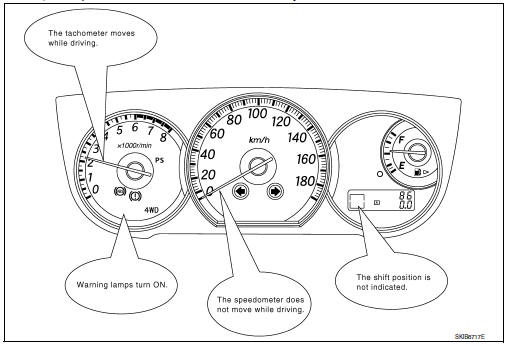
INSPECTION OF VEHICLE CONDITION Check whether the symptom is reproduced or not.
NOTE: Do not turn the ignition switch OFF or disconnect the battery cable while reproducing the error. The error may temporarily correct itself, making it difficult to determine the root cause.
CHECK OF CAN SYSTEM TYPE (HOW TO USE CAN SYSTEM TYPE SPECIFICATION CHART) Determine CAN system type based on vehicle equipment.
NOTE:
- This chart is used if CONSULT does not automatically recognize CAN system type.
- There are two styles for CAN system type specification charts. Depending on
the number of available system types, either style A or style B may be used.
CAN System Type Specification Chart (Style A)
NOTE:
CAN system type is easily checked with the vehicle equipment identification information shown in the chart.
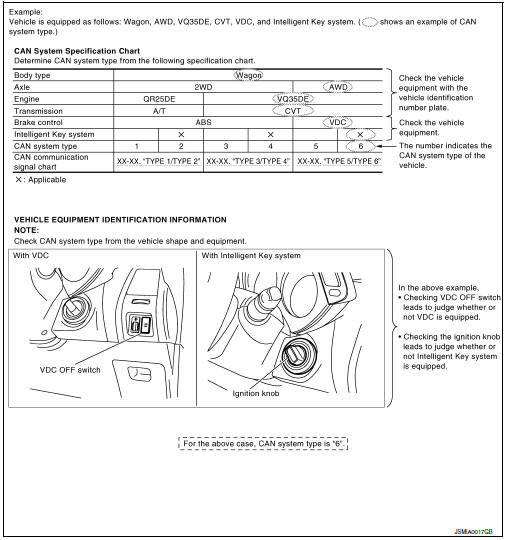
CAN System Type Specification Chart (Style B)
NOTE:
CAN system type is easily checked with the vehicle equipment identification information shown in the chart.
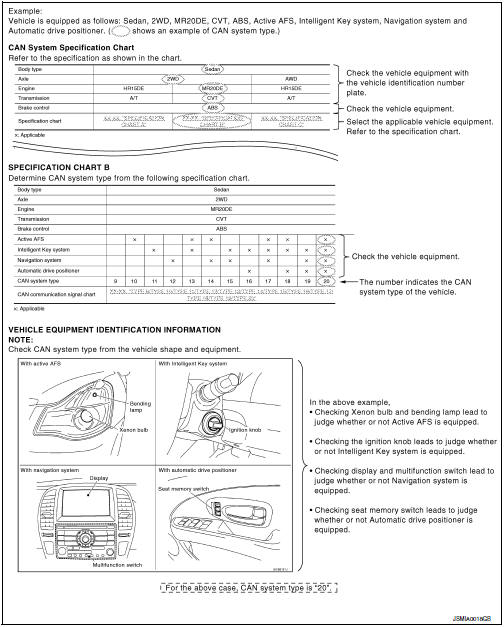
CREATE INTERVIEW SHEET
Fill out the symptom described by the customer, vehicle condition, and CAN system type on the interview sheet.
Interview Sheet (Example)
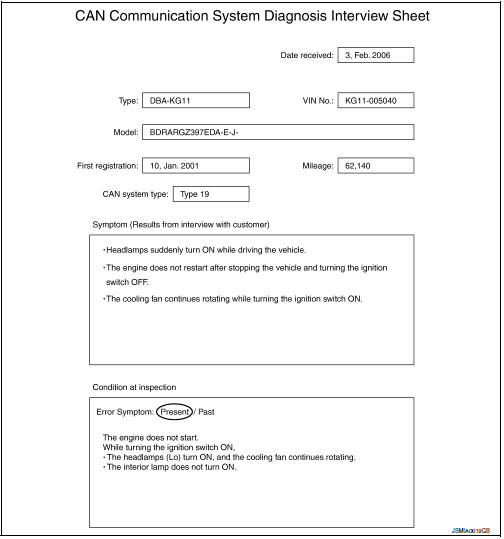
DETECT THE ROOT CAUSE CAN diagnosis function of CONSULT detects the root cause.
 Trouble diagnosis
Trouble diagnosis
Condition of Error Detection
DTC (e.g. U1000 and U1001) of CAN communication is indicated on SELF-DIAG
RESULTS on CONSULT if a
CAN communication signal is not transmitted or received between unit ...
 How to use this manual
How to use this manual
HOW TO USE THIS SECTION
Caution
This section describes information peculiar to a vehicle and inspection
procedures.
For trouble diagnosis procedure, refer to LAN-15, "Trouble Diagnosis
Proc ...
Other materials:
Engine speed signal circuit
Description
ECM sends engine speed signal to power steering control unit.
Diagnosis Procedure
1.PERFORM ECM SELF-DIAGNOSIS
With CONSULT
Perform ECM self-diagnosis.
2.CHECK HARNESS BETWEEN ECM AND POWER STEERING CONTROL UNIT FOR OPEN
Turn the ignition switch OFF.
Disconnect ECM connec ...
Power window lock switch
Component Function Check
1. CHECK POWER WINDOW LOCK
Activate the power window lock switch and verify that the front power window
RH, rear power window LH and
rear power window RH are inoperative.
Component Inspection
1. CHECK POWER WINDOW LOCK SWITCH
Disconnect main power window and door ...
Sunshade system does not operate properly
Diagnosis Procedure
1.CHECK SUNSHADE MECHANISM
Check the following.
Operation malfunction caused by sunshade mechanism deformation,
pinched harness or other foreign materials
Operation malfunction and interference with other parts by poor
installation
2.CHECK SUNSHADE MOTOR ASSEMBLY ...
Nissan Maxima Owners Manual
- Illustrated table of contents
- Safety-Seats, seat belts and supplemental restraint system
- Instruments and controls
- Pre-driving checks and adjustments
- Monitor, climate, audio, phone and voice recognition systems
- Starting and driving
- In case of emergency
- Appearance and care
- Do-it-yourself
- Maintenance and schedules
- Technical and consumer information
Nissan Maxima Service and Repair Manual
0.0082
